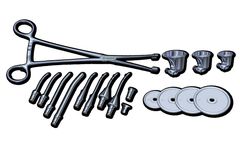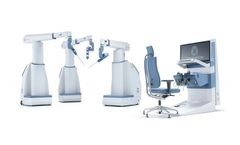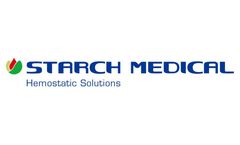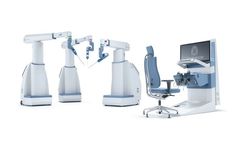- Home
- Equipment
- north america
- laparoscopy surgery procedure
Show results for
Refine by
Laparoscopy Surgery Procedure Equipment Supplied In North America
5 equipment items found
Manufactured by:Advin Urology based inAhmedabad, INDIA
Laparoscopy is a surgical procedure in which a fiber-optic instrument is inserted through the abdominal wall to view the organs in the abdomen or permit small-scale surgery. A laparoscope is used in Laparoscopy ...
Manufactured by:Conkin Surgical Instrument Ltd. based inVancouver, BRITISH COLUMBIA (CANADA)
The Valtchev Vaginal Delineator (VVD) is a gynecology laparoscopic instrument that is specifically designed to mobilize the uterus and delineate the fornices. It is comprised of interchangeable stainless steel parts that are able to be sterilized and reused for long term cost-effectiveness. This instrument will also occlude the vagina thereby not allowing carbon dioxide to escape at the time the ...
Manufactured by:Senhance, Brand of Asensus Surgical, Inc. based inDurham, NORTH CAROLINA (USA)
The Senhance Surgical System removes the economic limitations of current robotic systems with standard reusable instruments and an open-platform architecture strategy that enables hospitals to leverage existing technology investments. That keeps time and cost-per-procedure comparable to manual laparoscopy, so that the benefits of robotics can reach more patients, in more care settings, for a ...
Manufactured by:Starch Medical, Inc. based inSan Jose, CALIFORNIA (USA)
PerClot® Polysaccharide Hemostatic System is a unique, absorbable powder hemostat that is commercially available in over 35 countries outside of the United States. PerClot is composed of plant starch that is modified to create an adhesive hemostatic powder. It is used as an adjunctive hemostatic device to control bleeding during multiple open and laparoscopic surgical procedures, including ...
Manufactured by:Asensus Surgical US, Inc. based inDurham, NORTH CAROLINA (USA)
The Senhance® Surgical System removes the economic limitations of current robotic systems with standard reusable instruments and an open-platform architecture strategy that enables hospitals to leverage existing technology investments. That keeps time and cost-per-procedure comparable to manual laparoscopy, so that the benefits of robotics can reach more patients, in more care settings, for a ...





